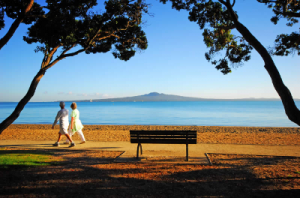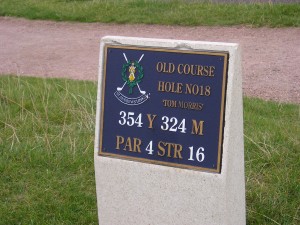Today I’d like to share a guest post with you …

Walking the Talk
Most conversations seem to be carried on while people aren’t moving. Instead, they are seated around a table, in a restaurant booth, on a park bench, at an office desk. Does their being sedentary affect the quality of communication?
Probably, yes. For example, persons seated across from one another may be more confrontational. As well, people seated may be more “fixed” in their viewpoints, just as they are fixed in their seats. Furthermore, where you sit often signals who has more power. The one at the head of the table tends to be the chairperson or the boss. Spacing and seating like this are concerns of the science of proxemics devised by anthropologist Edward T. Hall and explained in his classic book, The Hidden Dimension.
What, if any, might be the advantages of talking while walking?
1. When persons walk together, side by side, they almost always walk in rhythm, almost like a dance. When “in sync,” we humans feel more similar and collaborative and thus more prone to common understanding and agreement. That’s a plus.
2. Talking while walking side-by-side has the effect of diffusing intensity because we’re not looking directly at each other. Because we must look where we’re stepping, our full attention can’t be on the other person. This lessened attention can also be positive, at least in certain situations.
3. When we are walking, we are not only getting some exercise, but also our bodies are releasing “good chemicals” – the endorphins that lift our mood. (Physicians typically prescribe “take a walk in the park” for patients who suffer from depression.) As well, even gentle exercise like walking can have the effect of raising the serotonin level in one’s system, the result being an enhancement of mood and reduction of anger and aggression. Certainly, talking is more congenial when we’re in a good mood.
4. Walking in nature can be especially powerful in stimulating good feelings. Strolling through a rose garden, down a lushly tree-lined path, or in a redwood forest gives us awesome beauty and may induce a broader perspective on differences we may have with others.
5. For those who might think that to talk about serious topics we must be seated, as at a conference table or in a classroom, I’ll remind you of Jesus and Buddha, teaching their disciples while walking. And of the “peripatetic school” of Aristotle and his own teacher, Plato, known for discussing big ideas while walking around. In modern times, history describes significant diplomatic negotiations that took place during “a walk in the woods.”
6. Finally, I have often observed “mall walking” by small groups of friends. (Here in Las Vegas, far too hot for walking outside in the summertime, shopping malls allow these groups to walk for exercise before stores open.) These groups are not only exercising, but they’re creating lively social events. Everyone’s walking, and most walkers are talking. And the socializing seems to be more fun than if they were sedentary in a coffee shop.
I hope this short article has given you some good reasons for “walking your talk.” Doing so has some advantages.
(Dr. Loren Ekroth, a national expert on conversation, publishes a complimentary newsletter each week. Subscribe at www.conversationmatters.com)
 Are you looking for a way to improve your golf score? Aside from the “mental game”, there is also the issue of physical fitness.
Are you looking for a way to improve your golf score? Aside from the “mental game”, there is also the issue of physical fitness.
